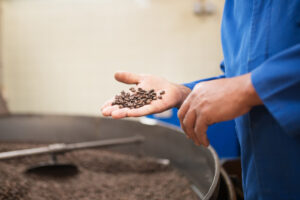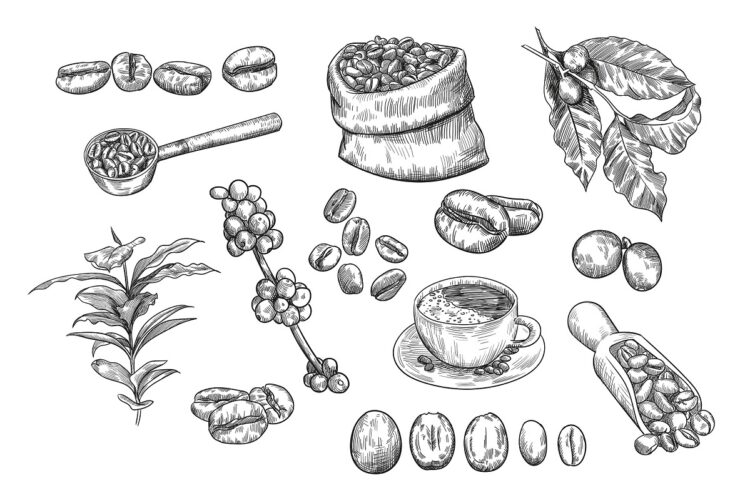Coffee has become a staple of modern society, with millions of people around the world enjoying a cup of coffee every day. But have you ever wondered how your favorite cup of coffee is made? The process of roasting and brewing coffee is an art form that requires skill, knowledge, and patience. Whether you’re a coffee lover looking to enhance your home brewing skills or a budding barista interested in the intricacies of coffee roasting, our comprehensive guide to mastering the art of bean and brew is the perfect resource for you.
In this guide, we’ll take you through the step-by-step process of roasting and brewing coffee, from selecting the perfect beans to achieving the perfect brew. We’ll explore the science behind coffee roasting and brewing, giving you the knowledge you need to make informed decisions about the beans you use and the brewing methods you employ. And we’ll provide you with practical tips and tricks for perfecting your coffee brewing skills, whether you’re using a drip coffee maker, a French press, or an espresso machine.
So whether you’re a seasoned coffee aficionado or a curious beginner, join us as we delve into the world of coffee roasting and brewing, and discover the art of bean and brew.
Understanding Coffee Roasting

Coffee roasting is the process of heating green coffee beans to transform them into the rich, aromatic beans we all know and love. During the roasting process, the beans undergo a series of chemical reactions that affect their flavor, aroma, and color. These reactions produce complex flavors and aromas that are unique to each type of bean and roasting method.
There are three main levels of coffee roasting: light, medium, and dark. Each level produces beans with different flavors and aroma profiles. Lightly roasted beans are light brown in color and have a fruity and acidic flavor, while medium roasted beans have a more balanced flavor with hints of sweetness and acidity. Dark roasted beans have a strong, bold flavor with a slightly bitter taste.
Different coffee roasting methods can also affect the flavor of the beans. The most common methods are drum roasting and air roasting. Drum roasting involves heating the beans in a rotating drum, while air roasting uses hot air to circulate around the beans. Both methods can produce high-quality beans, but they can produce different flavor profiles depending on the roasting time and temperature.
Mastering Coffee Brewing Techniques
Once you have your roasted coffee beans, it’s time to brew them to perfection. The key to brewing the perfect cup of coffee is to pay attention to the water quality, brewing temperature, and brewing time.
Water quality is critical in coffee brewing because coffee is primarily water. If the water you use is impure or contains minerals that affect the flavor, it will have a significant impact on the final taste of your coffee. Always use fresh, clean water for brewing coffee.
The brewing temperature is another important factor to consider. The ideal brewing temperature for coffee is between 195°F and 205°F (90°C to 96°C). If the water temperature is too low, the coffee will be weak and under-extracted. If the water is too hot, the coffee will be bitter and over-extracted.
The brewing time also affects the flavor of the coffee. The longer the coffee brews, the stronger and more bitter it will be. Conversely, a shorter brewing time will produce a weaker, less flavorful cup of coffee.
There are several popular brewing methods, each with its unique brewing process and flavor profile. Some of the most common methods include pour-over, French press, and espresso brewing.
Pour-over brewing involves pouring hot water over coffee grounds in a filter. The water drips through the filter and extracts the flavor from the coffee, producing a clean and balanced cup of coffee.
French press brewing involves steeping coffee grounds in hot water and then pressing them down with a plunger. This method produces a robust and full-bodied cup of coffee.
Espresso brewing involves forcing hot water through finely ground coffee at high pressure. This method produces a concentrated shot of coffee with a thick, creamy crema on top.
Coffee Roasting and Brewing Tips and Tricks
To get the most out of your coffee beans, here are some tips to consider:
Use a burr grinder
A burr grinder produces a consistent grind size, which is essential for brewing high-quality coffee.
Store your beans properly
Store your beans in a cool, dry place away from light and air. This will help to preserve their flavor.
After harvesting, the coffee cherries are processed to remove the outer layer of the fruit and expose the coffee beans. The processing method affects the flavor of the coffee, so it’s an important step in the production process.
There are two main processing methods: the wet method and the dry method. In the wet method, the coffee cherries are washed and the fruit is removed with water before the beans are dried. This method tends to produce a cleaner, brighter flavor with more acidity. In the dry method, the cherries are dried in the sun and the fruit is removed after the beans are dry. This method tends to produce a more complex, earthy flavor with less acidity.
Once the coffee beans are processed, they are sorted and graded based on factors like size, shape, and color. The highest grade of coffee beans is known as specialty coffee, and it is grown and processed to meet strict quality standards. Specialty coffee is often sold as single-origin coffee, meaning that it comes from a specific region or farm and has a unique flavor profile.
The coffee industry is constantly evolving, and new trends and technologies are emerging all the time. One exciting trend in the coffee industry is cold brew coffee. Cold brew coffee is made by steeping coffee grounds in cold water for an extended period of time, usually 12 to 24 hours. The result is a smooth, low-acid coffee that can be enjoyed over ice.
Another trend in the coffee industry is sustainability. Coffee is one of the most traded commodities in the world, and its production can have a significant impact on the environment and on the communities where it is grown. Many coffee companies are now focusing on sustainable practices, such as using renewable energy, reducing water usage, and supporting fair trade and organic farming.
In addition to being a delicious and beloved beverage, coffee has some surprising health benefits. Studies have shown that moderate coffee consumption (3 to 5 cups per day) can reduce the risk of certain health conditions, such as type 2 diabetes, Parkinson’s disease, and liver cancer. Coffee is also a source of antioxidants and can help improve cognitive function.
Final words
In conclusion, coffee is a complex and fascinating subject with a rich history and culture. Whether you’re a coffee lover or just curious about this popular beverage, there is always more to learn about coffee. From the origins of coffee to the latest trends in the industry, there is no shortage of interesting and exciting topics to explore. So pour yourself a cup of coffee and dive in!

